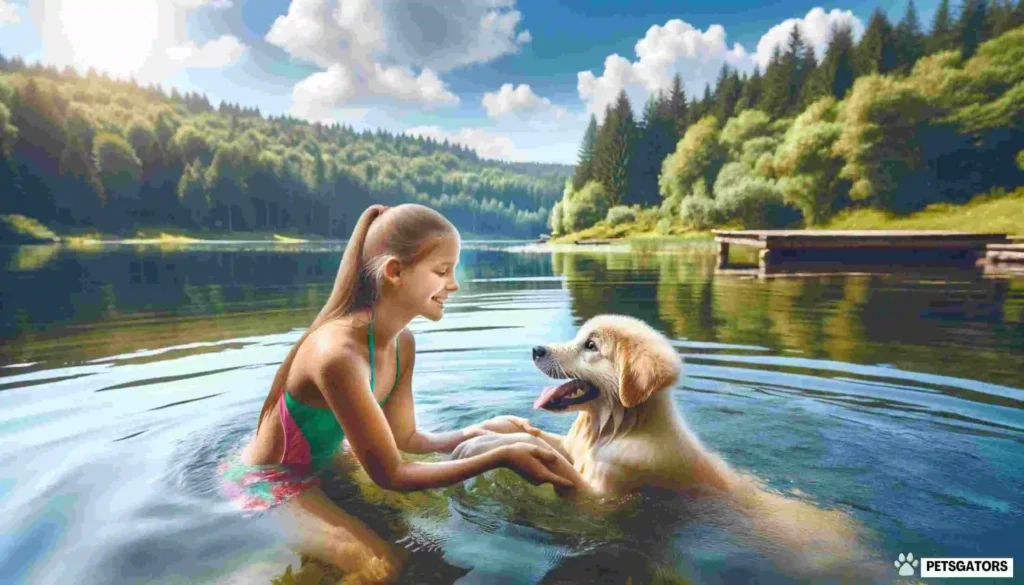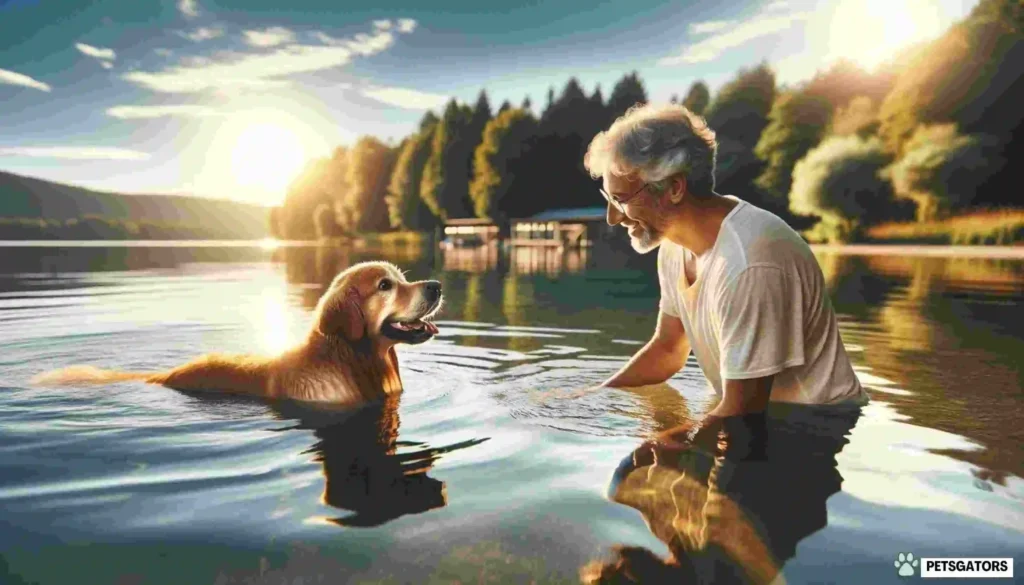Dog lovers! Today, I’m excited to share with you my personal journey and some invaluable insights on a topic that’s close to my heart: teaching our furry friends to swim. Swimming is not only a fantastic way for dogs to exercise but also an essential skill that can keep them safe. So, let’s dive into the Proven Steps: How to Teach a Dog to Swim Effectively, alongside answers to some common questions that might tickle your curiosity.

How to Teach a Dog to Swim
Teaching your dog to swim can be a rewarding experience for both you and your pet. Here are seven proven steps to help you teach your How to Teach a Dog to Swim effectively:
· Start Early and Slow:
If possible, begin teaching your dog to swim at a young age. Start with short, positive sessions in shallow water where your dog can feel the ground. Use a calm, encouraging voice to build their confidence.
· Use a Flotation Device:
Invest in a well-fitted dog life jacket. This provides buoyancy, making the learning process safer and more comfortable for your dog. It also allows them to concentrate on learning to paddle without worrying about sinking.
· Gradual Introduction:
Gradually introduce your dog to the water. You can start by playing near water, then slowly getting their paws wet, and eventually encouraging them to step in further. Treats and toys can be used as incentives.
· Lead by Example:
Dogs often learn best by example. If you’re comfortable in the water, lead by example and go in first. Your dog is likely to follow you, which can reduce anxiety and increase their willingness to try swimming.
· Support and Guide:
Initially, support your dog’s body while they learn to paddle. You can place one hand under their belly and use toys or treats to encourage them to move forward. This helps them understand the motion needed to swim.
· Practice Makes Perfect:
Consistency is key. Regular, short swimming sessions are more effective than occasional, long ones. This helps reinforce the learning process and builds your dog’s confidence and stamina.

How to Teach a Dog to Swim
· Always Supervise:
Never leave your dog unsupervised near water, even after they’ve become proficient swimmers. Watch for signs of fatigue or distress, and be ready to assist them out of the water if necessary.
Understanding Your How to Teach a Dog to Swim
First off, it’s essential to address a common question:
Can dogs be taught to swim?
The answer is a resounding yes, although not all dogs are natural swimmers. While some breeds have a knack for water, others might need a gentle introduction. This brings us to another intriguing question: Do dogs know how to swim naturally? Interestingly, while many dogs instinctively “dog paddle” when placed in water, this doesn’t mean they can swim well or safely without proper training.
The Benefits of Swimming for Dogs
Swimming offers a multitude of benefits for our canine companions. It’s a low-impact exercise that’s easy on their joints, making it perfect for older dogs or those with arthritis. But, is swimming hard on dogs? Not if introduced and practiced correctly. It’s crucial to monitor their stamina and ensure they’re enjoying themselves.
Getting Started: The Right Age and Precautions
At what age can a dog start swimming?
Puppies can begin learning as soon as they’ve completed their vaccination course, usually around 4 months old. However, always consult with your vet first to ensure your pup is ready for this new adventure.
Comprehensive Instructions for Training Your Dog in Aquatic Skills
- Introduction to Water: Start with shallow waters where your dog can feel the ground. Use toys or treats to make this a positive experience.
- Use a Dog Life Vest: A life vest is crucial for safety and helps your dog feel more secure as they learn to float.
- Enter the Water Together: Lead by example. If your dog sees you in the water and having fun, they’re more likely to follow.
- Gradual Depth Increase: Slowly encourage your dog to venture into deeper water where they must paddle to stay afloat.
- Support and Guidance: Always stay close, offering physical support under their belly if they seem nervous or struggle to keep afloat.
- Practice and Patience: Don’t rush the process. Some dogs take to swimming quickly, while others need more time to build confidence.
- Post-Swim Care: Rinse your dog with fresh water after swimming, especially if they’ve been in chlorinated pools or salty sea water, to avoid skin irritations.
FAQs
Why do dogs bite water when swimming?
It’s often a playful behavior or their way of trying to “catch” the water as they paddle.
Is ocean water okay for dogs?
In moderation, yes. But ensure they don’t drink it, as the salt can be harmful.
What breed of dog cannot swim?
Breeds with heavy chests and short legs, like Bulldogs, often struggle. Always assess your dog’s individual ability.
How do you train a scared dog to swim?
Gradual exposure and positive reinforcement are key. Never force your dog into the water.
How far can a dog swim?
This varies greatly depending on the breed, age, and fitness level. Always supervise and keep swimming sessions appropriate to their ability.

How to Teach a Dog to Swim
Conclusion
How to Teach a Dog to Swim? Teaching your dog to swim can be a rewarding experience for both of you, opening up a new avenue for exercise and fun. Remember, patience and positive reinforcement are your best tools in this journey. Every dog learns at their own pace, and it’s our role to support them through this process. With these steps, I hope to have equipped you with the knowledge to safely introduce your dog to the joys of swimming. So, grab that life vest, and let’s make a splash!
For more detailed How to Teach a Dog to Swim? guides on caring for your swimming canine, check out “How to Teach Your Dog to Swim” on PetMD and “Does Dog Know How To Swim? Essential Tips & Insights” on petsgators.com for additional insights and tips.
Happy swimming!







